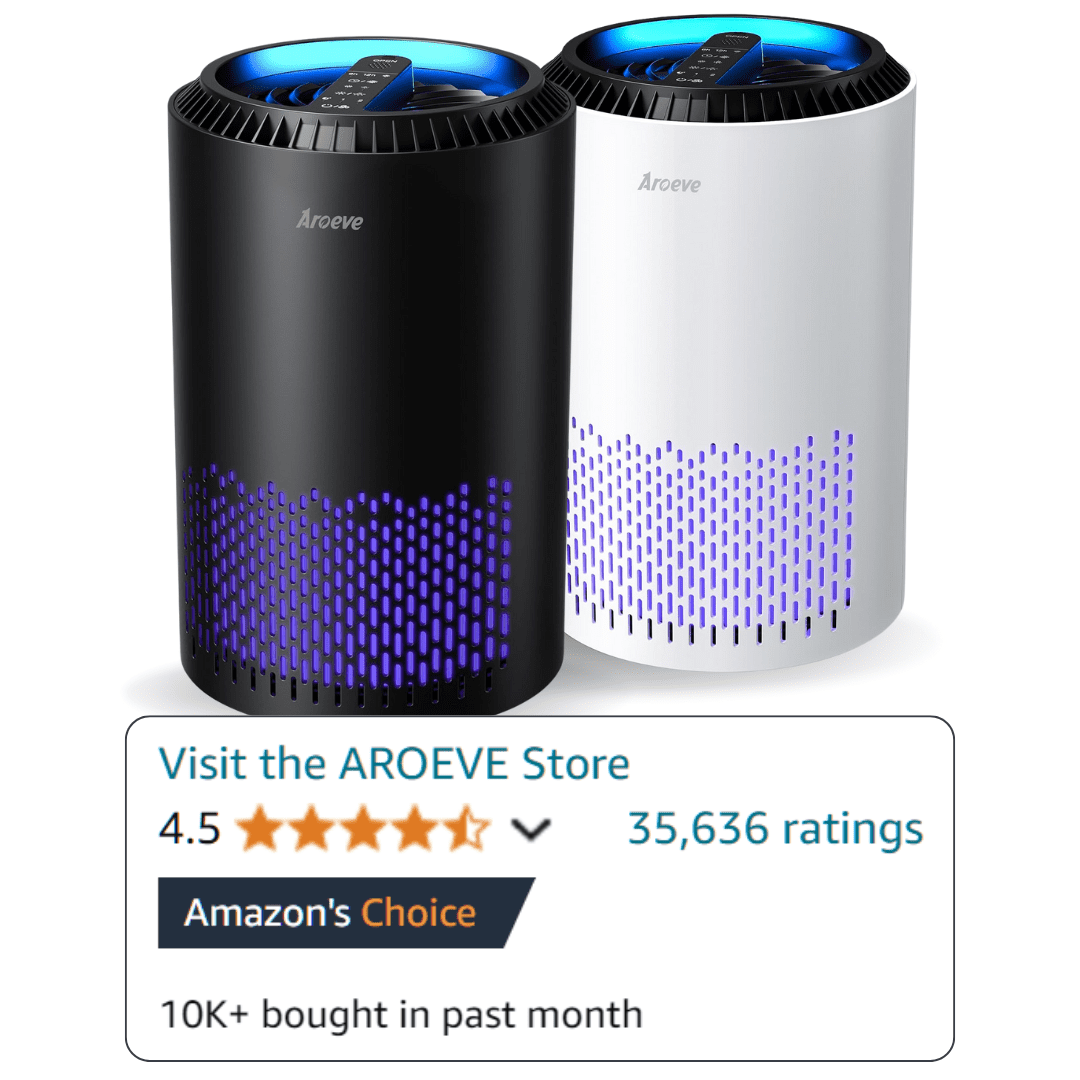Ever noticed your air quality monitor alerting you to a sudden spike in VOCs out of nowhere?
It can be startling and concerning. Volatile Organic Compounds (VOCs) are gases emitted from certain solids or liquids, and sudden spikes in their levels can affect your indoor air quality and health.
In this guide, we’ll explore the common causes of these sudden increases, provide step-by-step troubleshooting methods, and share strategies for preventing future spikes.
What Are VOCs and How Do They Affect Indoor Air Quality?
Volatile Organic Compounds (VOCs) are chemicals that easily evaporate at room temperature.
Common sources include paints, cleaning supplies, and even some types of furniture.
Monitoring VOC levels is crucial because exposure can lead to short-term symptoms like headaches and irritation, or long-term health issues like respiratory problems or increased cancer risk.
Sudden VOC Spikes: Common Causes
Recent Household Activities
Certain activities can cause a sudden increase in VOC levels. Cleaning with strong chemicals, cooking, engaging in craft projects, or painting can release significant amounts of VOCs into the air. For example, using a new cleaning product might temporarily spike your readings as the chemicals evaporate.
Hidden Sources
Sometimes, the source of a VOC spike isn’t immediately obvious. Building materials like plywood or particleboard, new furniture, carpets, and adhesives can off-gas VOCs for weeks or even months after installation. These hidden sources can contribute to sudden increases in VOC levels, especially if they are disturbed or newly introduced into your home.
Outdoor Air Infiltration
Opening windows or using fans can pull in outdoor air, which might contain higher levels of VOCs, especially in urban areas or near industrial sites. Weather conditions like humidity can also affect VOC levels, as some compounds release more readily in damp conditions.
HVAC and Airflow Dynamics
The way air moves through your home can impact VOC levels. Fans, air exchangers, and uneven airflow can redistribute pollutants, potentially causing spikes in certain areas. For instance, if your HVAC system is pulling air from a room where VOCs are being emitted, it can spread those compounds throughout your home.
Technology & Sensor Malfunctions
Your air quality monitor might be alerting you to a false spike due to sensor issues. Calibration problems, incorrect placement, or interference from other devices can cause your sensor to report inaccurate readings. Regular maintenance and proper placement can help ensure your monitor provides reliable data.
Step-by-Step Troubleshooting When You Notice a VOC Spike
When you notice a sudden spike in VOC levels, follow these steps to identify and address the issue:
Step 1: Check Household Changes – Think about any recent activities or new products introduced into your home. Have you used new cleaning supplies, painted a room, or brought in new furniture?
Step 2: Inspect Air Flow and Ventilation Patterns – Examine how air is moving through your home. Are any windows open, or are fans redistributing air in a way that might concentrate VOCs?
Step 3: Review Outdoor Air Quality Reports – Compare your indoor readings with local outdoor air quality reports. You can find these on AirNow.gov or your local environmental agency’s website.
Step 4: Verify Sensor Accuracy – Reset your air quality monitor, clean it according to the manufacturer’s instructions, and consider relocating it to ensure you’re getting accurate readings.
Step 5: Document and Monitor – Keep a log of your VOC readings and any changes you make. Take photos or keep notes to track patterns over time.
How to Respond to High Indoor VOC Levels Safely
If you’ve identified a VOC spike, take these immediate actions:
Increase ventilation carefully – Open windows if outdoor air quality is good, but be mindful of pulling in polluted air. Avoid re-circulating air with fans, as this can spread VOCs. Use air purifiers with activated carbon filters, which can help remove VOCs from the air.
Know when to seek professional help – If VOC levels remain high despite your efforts, or if you suspect a hidden source, consider hiring an indoor air quality specialist to investigate further.
Protect vulnerable people – Children, the elderly, and those with respiratory conditions like asthma are more sensitive to VOCs. Ensure they spend time in well-ventilated areas and seek medical advice if they experience symptoms.
Long-Term Solutions to Prevent VOC Spikes
To keep your indoor air quality high and prevent future VOC spikes, consider these strategies:
Routine monitoring – Regularly check your VOC levels, especially after introducing new products or materials into your home. This helps you catch potential issues early.
Choose low-VOC products – When buying paint, cleaning supplies, or furniture, look for products labeled as low-VOC or VOC-free. These emit fewer harmful chemicals into your home.
Home ventilation best practices – Strategically place fans and open windows to promote good airflow. Consider installing heat recovery ventilators (HRVs) or energy recovery ventilators (ERVs) for efficient air exchange without energy loss.
Maintenance – Change HVAC filters regularly and perform seasonal checks on your ventilation systems. This ensures they’re working efficiently and not contributing to VOC issues.
Integrate smart home/IoT air quality solutions – Use smart air purifiers and monitors that can alert you to changes in air quality and even control your ventilation system automatically. Check out our guide to the best air purifiers for VOCs for recommendations.
FAQ: Sudden VOC Spikes in the Home
Why do VOCs spike at night?
VOC levels can increase at night due to lower ventilation rates when windows and doors are closed, and because some VOC sources, like building materials, off-gas more at cooler temperatures.
Can fans and open windows make indoor air quality worse?
Yes, if outdoor air quality is poor or if fans are redistributing indoor pollutants. Always check local air quality before opening windows and use fans strategically to promote fresh air exchange.
How fast should VOC levels drop after a spike?
VOC levels can drop quickly if the source is removed and ventilation is increased. However, some VOCs may take days or weeks to fully dissipate, especially if they’re coming from building materials or furniture.
Are VOC sensors accurate?
Modern VOC sensors can be quite accurate when properly calibrated and maintained. However, factors like sensor placement and interference from other devices can affect readings. Regular maintenance and following manufacturer guidelines can help ensure accuracy.
Tips for renters in apartments/condos
Renters may have limited control over building materials and ventilation systems. Use portable air purifiers, open windows when outdoor air quality is good, and communicate with your landlord about any persistent VOC issues. Consider using low-VOC products in your personal space.
Proactive Indoor Air Quality Management
In this comprehensive guide, we’ve explored the common causes of sudden VOC spikes, provided step-by-step troubleshooting advice, and shared strategies for preventing future issues.
Remember, proactive monitoring and management of your indoor air quality can help you maintain a healthy home environment.



